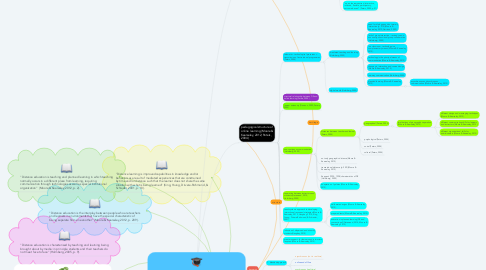
1. First definition - Personally, distance education entails a blended learning and teaching approach, utilizing both printed and online resources, to reach students in geographically dispersed locations.
2. "Distance learning is improved capabilities in knowledge and/or behaviors as a result of mediated experiences that are constrained by time and/or distance such that the learner does not share the same situation with what is being learned" (King, Young, Drivere-Richmond, & Schrader, 2001, p. 10).
3. "Distance education is the interplay between people who are teachers and learners in environments that have the special characteristic of being separate from one another" (Moore & Kearseley, 2012, p. 209 ).
4. "Distance education is characterised by teaching and learning being brought about by media: in principle students and their teachers do not meet face to face" (Holmberg, 2005, p. 9).
5. "Distance education is teaching and planned learning in which teaching normally occurs in a different place from learning, requiring communication through technologies as well as special institutional organization" (Moore & Kearseley, 2012, p. 2).
6. Revised personal definition - Distance education entails a context-appropriate, blended (ranging from totally offline to fully online) teaching strategy that consists of both synchronous and asynchronous elements where instructors and learners are geographically separated.
7. keywords
7.1. 1. blended approach
7.1.1. asynchronous (not in real-time)
7.1.2. online and offline
7.1.3. synchronous (real-time)
7.2. 2. Context-appropriate
7.3. 3. geographical separation
8. pedagogical structure of online learning (Moore & Kearseley, 2012; Peters, 2004)
8.1. telematic = technological processes = transmission of instructional programmes (Peters, 2004)
8.1.1. 'mediated teaching and learning' (Holmberg, 2005)
8.1.1.1. need for dialogue and not merely interaction (p. 210) (Moore & Kearseley, 2012; Garrison, 2009).
8.1.1.2. lack of group interaction - revised to add non-contiguous virtual group collaboration (Holmberg, 2005)
8.1.1.3. in a classroom, technology is a complementary means (Moore & Kearseley, 2012).
8.1.1.4. technology is the principal means of communication (Moore & Kearseley, 2012).
8.1.1.5. changes in interaction and course design (Moore & Kearseley, 2012).
8.1.1.6. two-way communication (Holmberg, 2005)
8.1.1.7. blended learning (Moore & Kearseley, 2012).
8.1.1.7.1. asynchronous and synchronous communication (Moore & Kearseley, 2012).
8.1.2. digital media (Holmberg, 2005)
8.2. structural relationship between DE and online learning (Peters, 2004)
8.3. learner autonomy (Garrison, 2009; Peters, 2004)
8.4. non-contiguous communication (Holmberg, 2005)
8.4.1. distances between teacher and learner (Peters, 2004)
8.4.1.1. geographical (Peters, 2004)
8.4.1.1.1. Implications of geographic separation (Moore & Kearseley, 2012).
8.4.1.2. psychological (Peters, 2004)
8.4.1.3. social (Peters, 2004)
8.4.1.4. cultural (Peters, 2004)
8.4.2. not only geographic distance (Moore & Kearseley, 2012).
8.4.3. transactional distance (p. 209) (Moore & Kearseley, 2012).
8.4.4. Keegan's (1990; 1998) characteristics of DE (Holmberg, 2005)
8.4.5. adaptation of policies (Moore & Kearseley, 2012).
8.5. separation between instructors and students (Gatewood, 2014; Holmberg, 2005)
8.6. team/systems approach to developing instructional resources/strategies (Moore & Kearseley, 2012; Haughey, 2010; King, Young, Drivere-Richmond, & Schrader, 2001)
8.6.1. deliberate designs (Moore & Kearseley, 2012).
8.6.2. prepared texts (Moore & Kearseley, 2012).
8.6.3. education is planned learning (DE and conventional) (Gatewood, 2014; Moore & Kearseley, 2012).
8.7. inclusion of dispersed and minority students (Haughey, 2010)
8.8. greater support for learners and instructors required (Moore & Kearseley, 2012).
9. Synonyms of DE (Moore & Kearseley, 2012).
9.1. distributed learning (Moore & Kearseley, 2012).
9.2. online learning (Moore & Kearseley, 2012; Garrison, 2009).
9.2.1. structural relationship between DE and online learning (Gatewood, 2014; Garrison, 2009; Peters, 2004)
9.3. correspondence education - first generation (Gatewood, 2014; Haughey, 2010)
9.4. home study (Moore & Kearseley, 2012).
9.5. tele-education (Moore & Kearseley, 2012).
9.6. open learning (Moore & Kearseley, 2012).
9.6.1. DE is NOT open education, but DE is a method in open education (Holmberg, 2005)
9.7. ODL (Moore & Kearseley, 2012).
9.8. open education (Moore & Kearseley, 2012).
9.8.1. Open Education Movement (Haughey, 2010)
9.9. e-learning (Moore & Kearseley, 2012; Garrison, 2009).
9.9.1. e-learning and m-learning (Holmberg, 2005)
9.10. flexible learning - fifth generation (Gatewood, 2014)
10. pedagogical heritage of DE (Peters, 2004)
10.1. correspondence education in the 19th century (Peters, 2004)
10.1.1. beginning of asynchronous teaching and learning (printed means) (Peters, 2004)
10.2. commercialization of DE - increased numbers of students (Peters, 2004)
10.2.1. DE - pre-1970 (Haughey, 2010)
10.3. Open universities and growing demand (Peters, 2004)
10.3.1. technology-based but different pedagogies and media structures (Peters, 2004)
10.3.2. growing adult student population (Peters, 2004)
10.3.3. single and dual-mode universities (Peters, 2004)
10.3.4. a reaction to the elitist university system (Haughey, 2010)
10.4. 4th pedagogical revolution (Peters, 2004)
10.4.1. Digital Information and Communication (Peters, 2004)
10.4.2. virtual learning spaces (Peters, 2004)
10.4.3. new formats of learning materials (Garrison, 2009; Peters, 2004)
10.4.4. "open, learner-centred, interactive, inclusive, flexible, participatory, outcome-based" (Peters, 2004, p.21)
